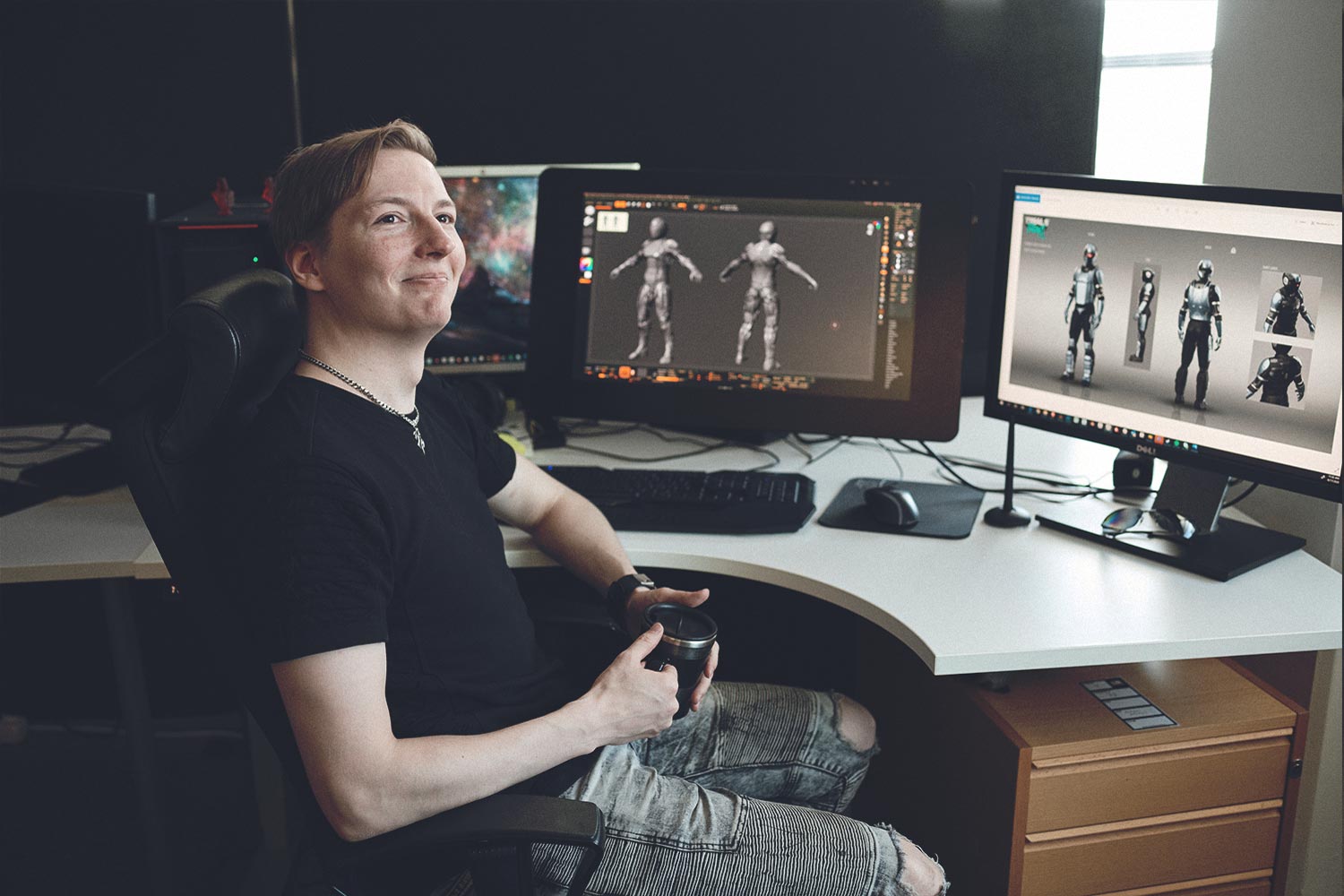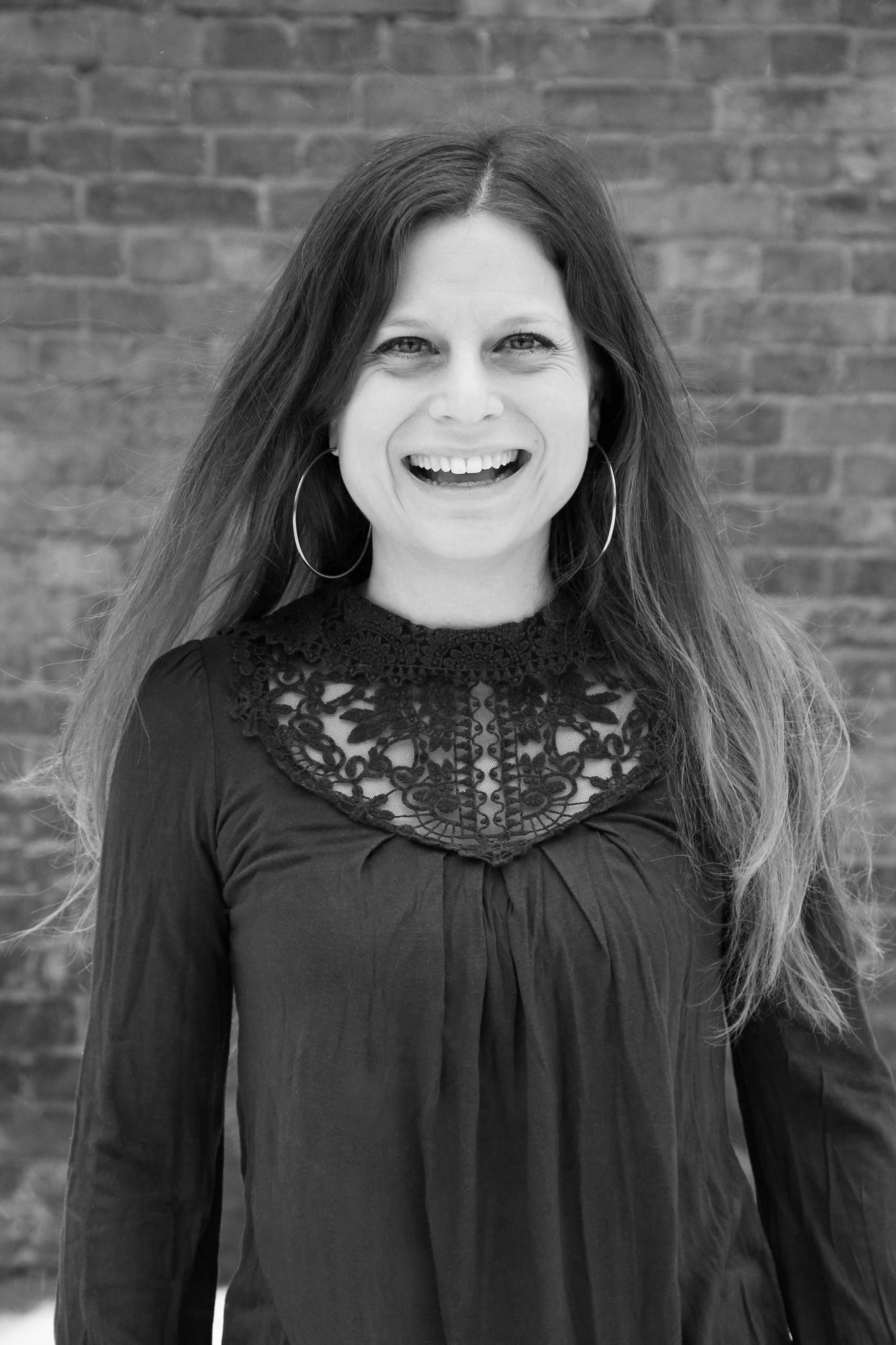You work as a Character Artist at the game studio. What’s it like to work on various characters?
Being a character artist is figuring out how mouth, skin, eyes and muscles look in their natural state and then trying to re-create as realistic version of them as possible. I assess the need for specific cloth modifiers in order to make the clothing move naturally on the character. The character should never start clipping because if that happens, it immediately breaks the immersion.
What are all the different parts of your job?
The 2D artists create the concept art. After that it’s my job to figure out how the concept works with a specific outfit, which is usually made a couple of months before.
“My job involves having the technical know-how of what’s going to be included in a working model.”
The pipeline includes high and low poly modelling, unwrapping, texturing, getting the right bones for the characters and discussing with the animator how the animation will work. It also involves considering the limitations with the rig, skinning, getting everything working inside the game engine and making sure nothing has been broken at that point, as well as creating scenes for the game logic.
You’ve worked with RedLynx for eight years. What sort of twists and turns has your career path taken during this time?
I was hired as a Level Designer. After four months I shifted into 3D art. A couple of years later I was given more and more work around character art. I became a Character Artist, but I was making environmental props as well. I still make them if needed. Out of all of this, I’m really passionate about character art. In my opinion, characters are the most important part of the story.
What are you currently busy with?
I’m working on a new unannounced IP (intellectual property). I’m going through all the technical stuff and learning how everything works.
Do you only work on human characters?
Character artists work on any characters: human, creatures, even weapon models, because they are part of the character’s gear. Basically, anything that the character is carrying is part of my domain.
There are people who are specialized only on making hair or skin. They have mastered their craft by doing that for a decade.
“I’m a creative person and want to work on lots of different things. So, I work on everything related to the character. Learning all that is a long and bumpy road!”
What is your favorite thing to work on?
Monsters are something I enjoy creating. They’re not bound by the natural laws of this world. The creepier and more intriguing, the more interested I am in creating them. Cthulhu Mythos and all those kinds of old gods and religions fascinate me!
What is your forte in creating a character?
I love the sculpting phase. That means coming up with the form for the character. When I started this job, I really enjoyed coming up with the details, like scars and the wear and tear in the outfits and the fabric falling.
I learned pretty fast that if your base form doesn’t work and look appealing, no amount of detail will fix it. I ended up spending multiple years learning how to create good forms. For a character artist there isn’t total artistic freedom–we need to take reality into account.

How do you keep feeding your creativity and imagination?
The only way I can draw interesting stuff is when I’m listening to music. That’s when I put more emotion into my work. The song itself doesn’t really create the end product, but acts as a catalyst.
Art and video games are where I get my inspiration. When I see other people’s amazing work on, for example ArtStation, I get really inspired. I realize that if someone can create something like that, I can too. I just need to learn what they have learned and make it my own.
What is needed in order to become a guru in character art?
Being good at receiving feedback is important. I know it hurts getting feedback if something doesn’t work. The gut reaction is to become defensive. Instead, slow down. Listen to the feedback and if it isn’t anything mean, say: “You’re completely right. I should change that.” If you don’t listen to feedback, you can’t convey what you want.
What’s the most exciting part of your job?
Usually it’s when we start a new project and have creative freedom. The Creative Director comes up with the vision and I’m given a bunch of concept art and images matching with the game vision. Then we go through what needs to be created. I sculpt my own vision based on the references and present them to the Creative Director.
“What’s great about RedLynx is that here you can actually express your own vision.”
Being part of the Ubisoft family brings many benefits to the RedLynx studio. What sort of resources have been available to you?
I have freedom and time to improve things. Being able to study and work on a detailed level is a great benefit. We get to be proud of what we create.
Toni’s tips for aspiring Character Artists
- Be passionate. Find your own niche and driving force. You need to have a specific focus. Over time, it can of course change.
- Find the tools and pipelines that work for you. Never stop studying new tools. Connect with people who you can ask for help.
- Learn everything you can about the living, breathing world. Go and explore your surroundings. In order to create believable things, you need to have the basic knowledge of how things work – no matter how cartoony the project you’re working on is.


